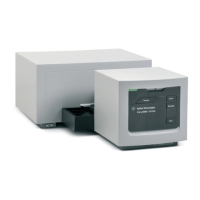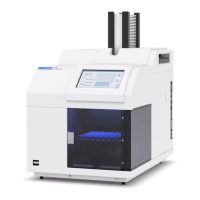16 Understanding Your Agilent ChemStation
1 Agilent ChemStation Features
About the ChemStation Software
Data Model
The ChemStation software is designed around a data model based on a
memory structure called a register. Registers are multipurpose structures that
can hold analytical data and information for both two-dimensional
information (for example, time/intensity) and three-dimensional information
(for example, time/intensity/wavelength).
The ChemStation provides commands and functions to construct, expand,
extract and, where it does not alter primary data, edit registers. For further
information, see the Macro Programming Guide which is available as online
help.
File Naming Conventions
Naming Conventions
The following rules enable the ChemStation to create and process valid names
for files and directories:
The following characters are not allowed as part of a file or directory name:
• < > : " / \ | @ % * ? ' & blanks (spaces) etc.
Using these characters in file or directory names may cause problems when
loading files in ChemStation. In addition, if these characters are used in the
installation folder, the reprocessing copy does not start, if the character % is
used in the installation folder, some 'Agilent Chemstation B.04.02' shortcuts
do not work properly.
The following rules apply in addition:
Table 1 Restricted characters
ChemStation parameter Character
Method File Names: % and . (decimal point) are not allowed
Data File Names (Prefix/Counter): blanks are not allowed
Data Subdirectory and Sequence Subdirectory: [] + = ; , . (decimal point); spaces are not allowed

